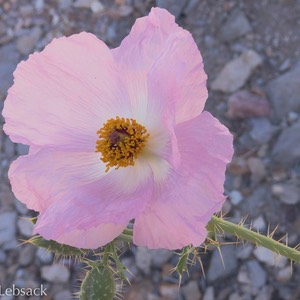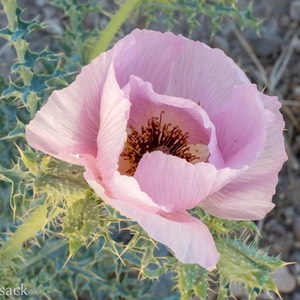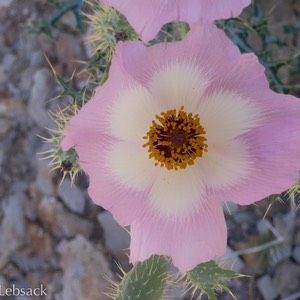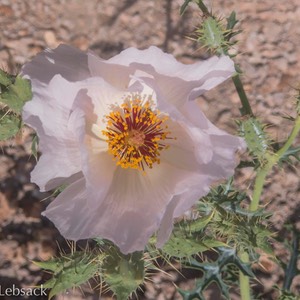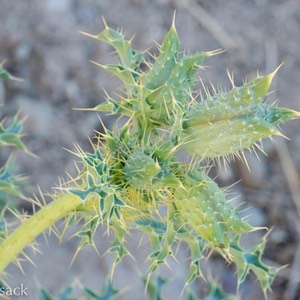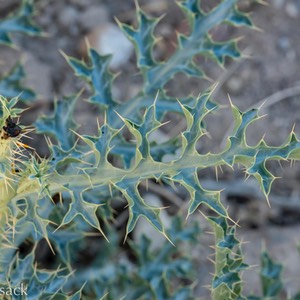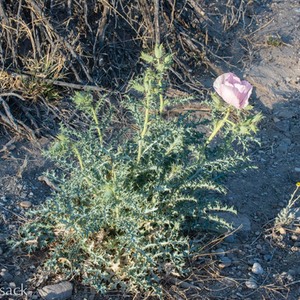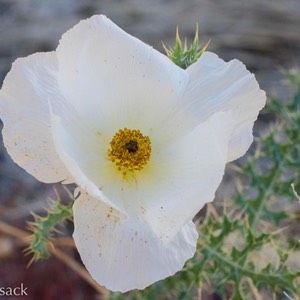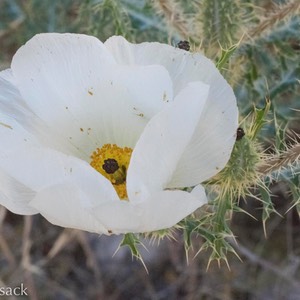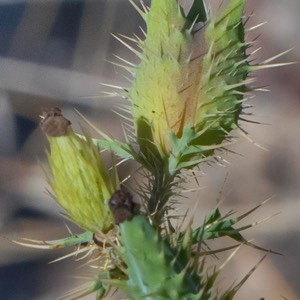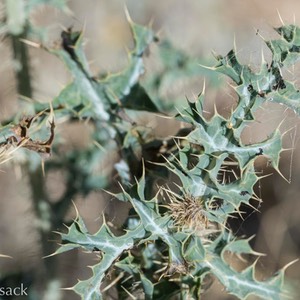Click on the images below to see larger versions.
| Scientific Name | Argemone chisosensis | USDA PLANTS Symbol |
|
| Common Name | Chisos Mountain Prickly Poppy | ITIS Taxonomic Serial No. |
|
| Family | Papaveraceae (Poppy) | Texas Beyond History Ref. | Click Here |
| Description |
Habitat: Various soils on dry plains, mountains and drainages.
Plant: Upright, prickly annual or biennial up to 32 inches tall, with a single, somewhat branched prickly stem. Leaves: Lower leaves 6 or more inches long and deeply pinnately-lobed; lobes widely separated; upper leaves less deeply lobed and shorter; spines at lobe points; leaf faces sparsely spined on main vein or no spines; underside with spines on main vein and some on secondary veins. Inflorescence: Large showy flowers up to 2-3/4 to 4 inches across, with 6 white to pale-lavender, papery overlapping petals; 150 or more stamens with pale yellow to red filaments and yellow or purplish anthers; purplish pistil in center. Bloom Period: March to June. References: "Manual of the Vascular Plants of Texas" by Correll and Johnston, "Wildflowers of Texas" by Michael Eason and Flora of North America. |
BONAP Distribution Map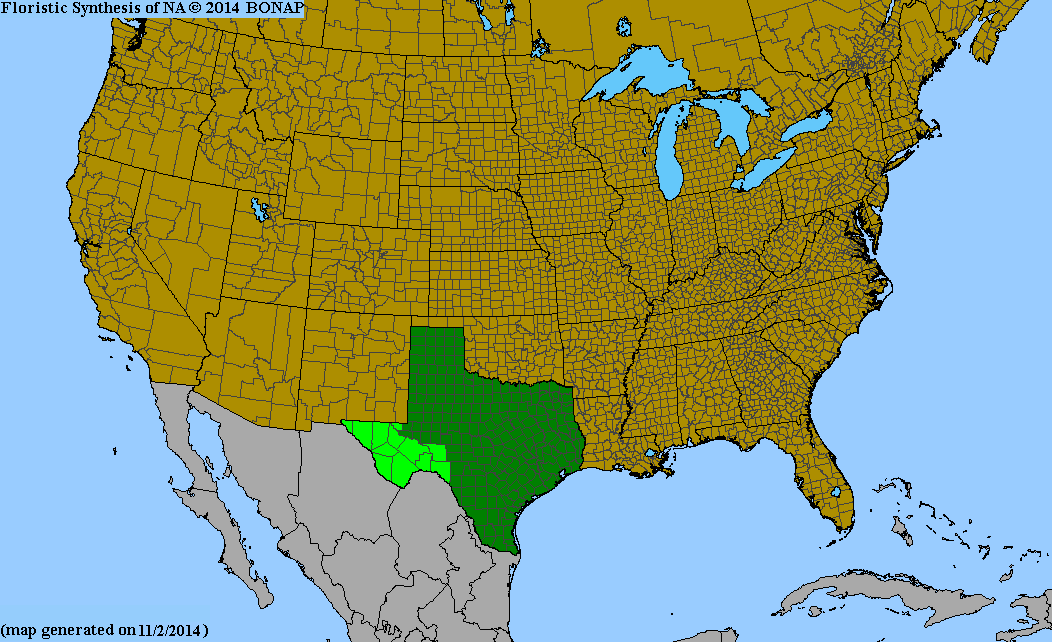
|
Texas Status: Native |
| Scientific Name | Argemone squarrosa | USDA PLANTS Symbol |
|
| Common Name | Hedgehog Prickly Poppy | ITIS Taxonomic Serial No. |
|
| Family | Papaveraceae (Poppy) | SEINet Reference |
Click Here |
| Description |
Habitat: Prairies, desert environments. Plant: Upright, very prickly annual or biennial 1-1/2 to 2-1/2 feet tall; stems very prickly. Leaves: Basal and stem leaves, 2-1/2 to 5 inches long; deeply lobed edges with many spines at points; top leaf faces with no spines; lower leaf surfaces with spines on main rib. Inflorescence: Large showy flowers up to 4 inches across, with 6 white, papery overlapping petals and many (150+) bright yellow stamens and dark pistil in center; oblong buds with some prickles and may have 2 to 3 horned sepals. Bloom Period: April to August. References: Flora of North America and Kansas Wildflowers and Grasses. |
BONAP Distribution Map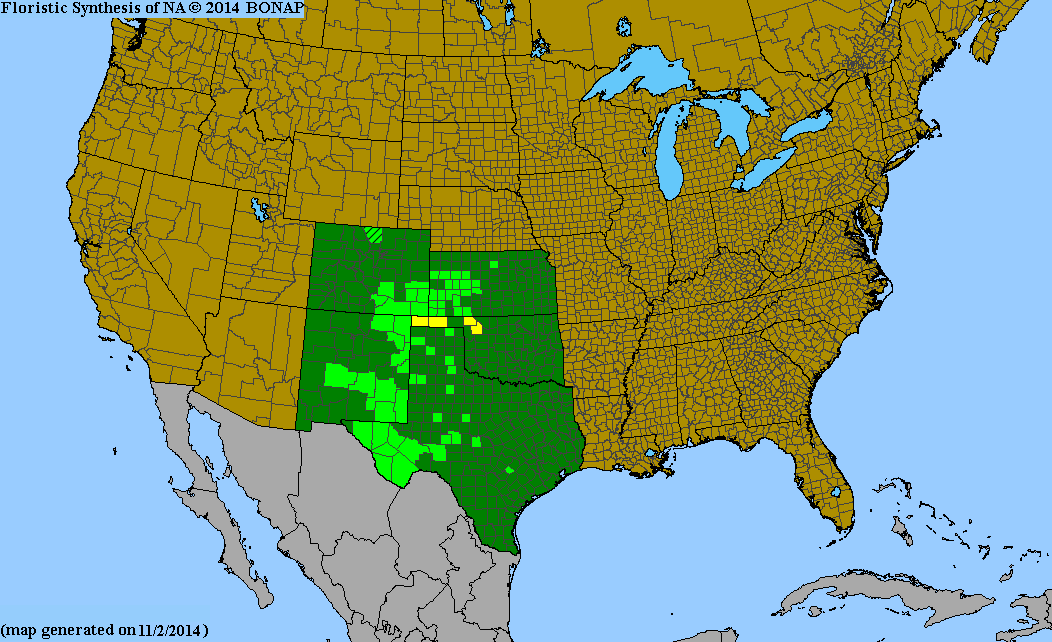 |
Texas Status: Native |
